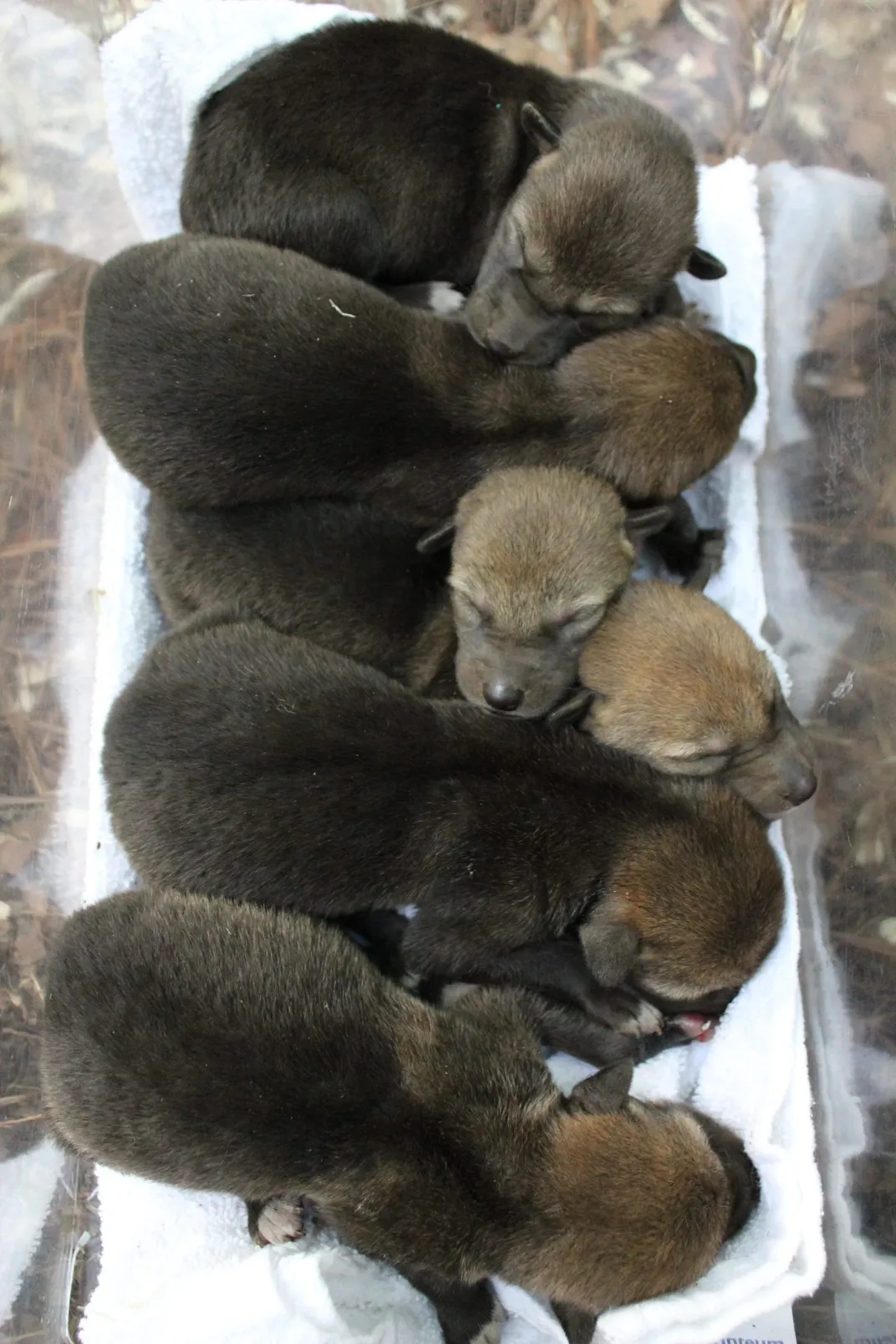Endangered Red Wolf Pups Born in Durham
The six puppies are the first born at Museum of Life and Science in 15 years, part of a program to save the wolves which only number about 300
/https://tf-cmsv2-smithsonianmag-media.s3.amazonaws.com/filer/e2/f0/e2f00785-48e0-4aa0-ac13-7cfda38063a2/wolf_pups.jpg)
April showers led to more than just May flowers at the Museum of Life and Science in Durham, North Carolina. On Friday, red wolf female #1858 gave birth to a litter of six pups, the first critically endangered red wolves born at the facility since 2002, the museum reports in a press release.
Red wolves, Canis rufus, only number about 300 individuals in the wild and in captivity. The species used to range throughout the Southeast and mid-Atlantic, but in 1980 it was declared extinct in the wild. Since then, zoos, museums and wildlife facilities across the country have collaborated as part of the US Fish and Wildlife Service's Red Wolf Recovery Program as well as the Red Wolf Species Survival Plan (SSP) to play matchmaker with the wolves, putting together pairs they hope will breed and that are genetically compatible. While a small number of wolves were released into certain areas of North Carolina too, in 2016, the U.S. Fish and Wildlife Service announced plans to capture the wild wolves remaining in North Carolina recovery area.
At the Museum of Life and Science, this is only the third time in 24 years that the museum has had a litter of red wolf pups. The first was in 1993 and the second in 2002. According to a blog post, in 2011 a female wolf began digging a den, and the museum believed puppies were on the way. But that turned out to be a false alarm.
Last summer, the SSP decided that female #1858, born at the Riding Reflection Arboretum and Nature Center in Chattanooga, Tennessee, was a better match for male #1784 who came to the museum from the Miller Park Zoo in Bloomington, Illinois in 2014, and transferred her in November. It was a love match from the beginning and caretakers witnessed the wolves mating earlier this spring.
Initial examination showed that the six newborn puppies were all healthy, though they will be closely monitored for their first 30 days. The new family will remain on view to the public, but the pups won’t begin to spend much time outside the den until the age of six weeks.
“This is truly exciting news for the species and the museum,” Sherry Samuels, the museum’s animal department director, says in the press release. “With recent developments surrounding the wild population, the responsibility of SSP institutions like the museum is more critical than ever before. Each pup is valuable for the survival of the species and represents hope for the red wolf population overall.”
The red wolf faces an existential threat far beyond the fact that its numbers have dwindled to around 300 individuals. There has been a long debate about whether the small canid is its own species or a hybrid between the gray wolf and the coyote. Bob Holmes at New Scientist reports that last summer detailed genetic analysis confirmed that the wolves were indeed a hybrid of the two species. Holmes reports that since the Endangered Species Act does not address hybrids, it’s possible that the red wolf could be stripped of its protections. Hang in there puppies.
